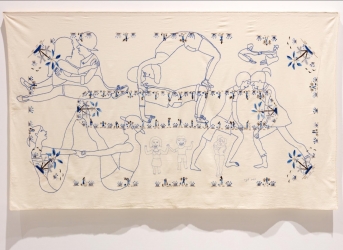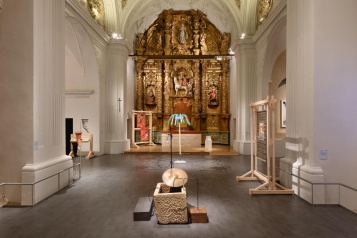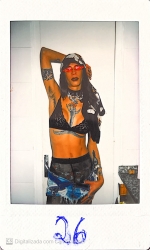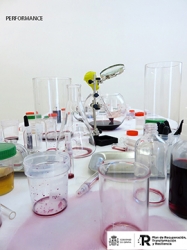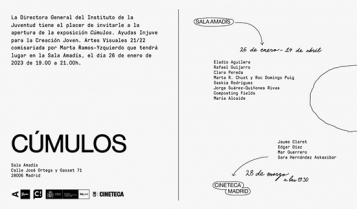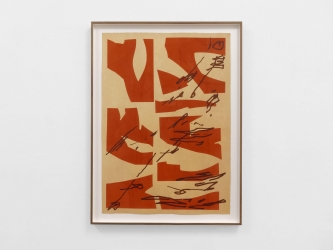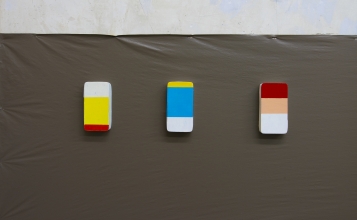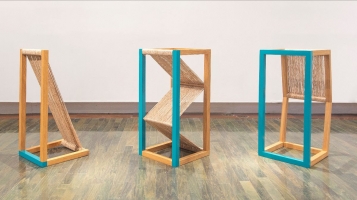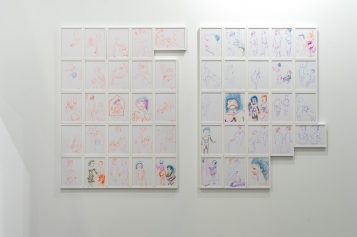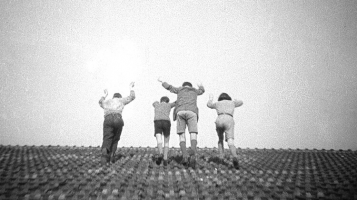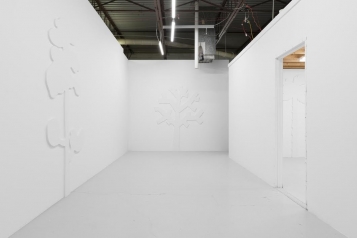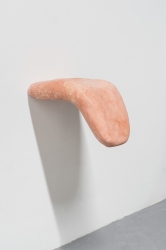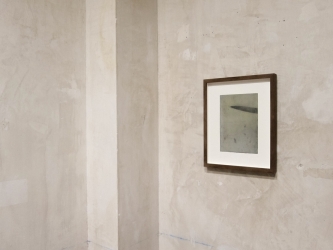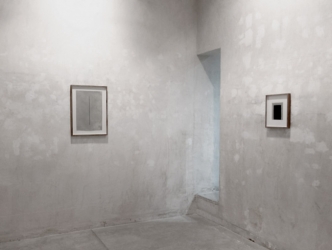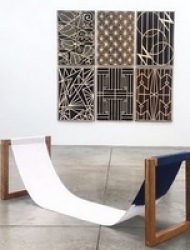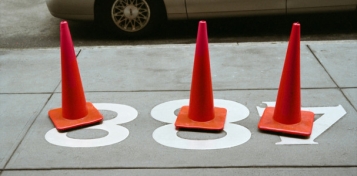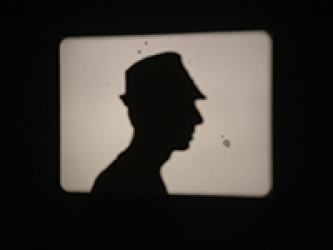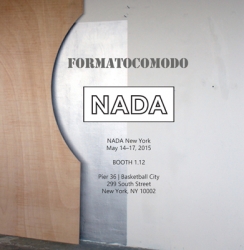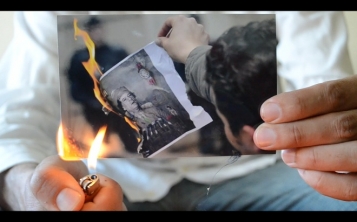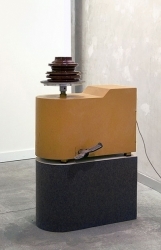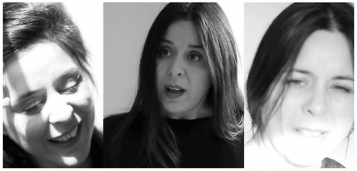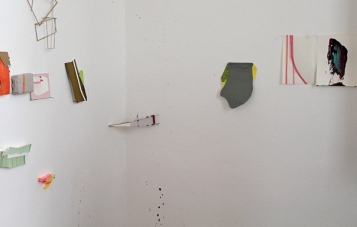For Manuel J. Borja-Villel, co-curator of the exhibition with Lluís Alexandre Casanovas Blanco and Beatriz Martínez Hijazo, the exhibition project does not respond to a prefiguration, but should be understood as an "essay." In this sense, it does not seek to represent a closed model, but rather is presented as a collective work in which, he points out, "the artists and researchers who have collaborated are essential to give life to a space where ideas are not subsumed within a general history, but are situated."
Fabular landscapes is structured around three fundamental pillars: the creation of a space for debate, friction, and antagonism; the production of a "humble exhibition," conceived as a relational rather than self-referential gesture; and the construction of a "situated museum," removed from the decontextualization processes typical of encyclopedic museums.
In this sense, "the verb 'to inhabit' implies a way of being and existing in the world, an exploration that invites us to inspect the construction of the environment, both physical and mental, as a result of historical processes and, therefore, unfinished and open to the possibility of difference," explains Borja-Villel.
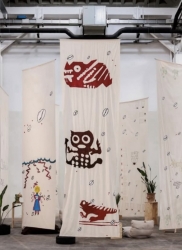
PHotoESPAÑA
04/06/2025 - 28/09/2025
Nacho Criado (Mengíbar, Jaén, 1943 - Madrid, 2010) is one of the most significant and influential artists on the Spanish contemporary scene, awarded the National Prize for Plastic Arts (2009). His work is in tune with the experimental practices produced in the adverse climate of the final years of the Franco dictatorship, the most significant manifestation of which was the Pamplona Meetings in 1972. Generally associated with conceptual art, his career traverses echoes of conceptualism, minimalism, land art, povera, and processual art. Nacho Criado's work thus escapes labels or classifications and is situated in the process that runs from the idea to its staging.
The exhibition "Blanco" articulates a conjunction of events that transcend the very concept of photography. It is the result of multiple works from the first half of the 1970s that revolve around language and action through photography, where the represented object becomes present in time and space.
The exhibition's title comes from the eponymous work "Blanco," originally presented in 1974 as part of the series "New Artistic Behaviors" coordinated by Professor Simón Marchán-Fiz at the German Institute in Madrid. The work reveals the essence of the photographic process through a continuous play of opposites. It establishes a double visual narrative between positive and negative, the underlying basis of which questions the expansion of language beyond the intrinsic meaning of the word.

Ventura Profana (Salvador, BA, 1993) is a multidisciplinary artist whose practice encompasses visual arts, performance, music, and literature. A Black transvestite pastor and missionary, her work critically investigates the implications of Deuteronomism and the expansion of neo-Pentecostal churches in Brazil and abroad, redefining Christian symbols from a dissident and decolonial perspective.
He recently participated in the Venice Biennale, in the Swiss Pavilion, alongside the artist Guerrero do Divino Amor. In 2023, he also participated in the 35th São Paulo Biennial, the Serpentine Gallery (United Kingdom), Vienna (Austria), the Centre d’Art Contemporain (Switzerland), and the Goethe-Institut (Germany). (São Paulo Museum of Art). His work is part of the collections of the Pinacoteca do Estado de São Paulo, the MASP (National Museum of Contemporary Art), and the Collegium.

Curators: Ángel Calvo Ulloa and Julia Castelló
25th Anniversary of Generations Program
¿Adónde irá el pájaro que no vuele?, curated by Ángel Calvo Ulloa and Julia Castelló, brings together artists whose works are permeated by the idea of generosity. The exhibition is part of the 25th anniversary celebration of Generations, the Montemadrid Foundation's call for young artists, and presents the current work of artists who have been part of the award's history. In parallel, the exhibition expands under the title Where Will I Go That Will Not Take You? to three independent spaces for contemporary creation and reflection near La Casa Encendida: Conciencia Afro, La Parcería, and Araña.
The exhibition begins with a reflection on the term generation, which—like generate or generosity—shares its etymological origin in the Latin root gen-. Based on this idea, the curators propose a journey through artistic practices that emerge from generous action, that flourish in a collaborative manner, that involve responsible modes of production, or that seek to generate a social return.
The galleries of La Casa Encendida host pieces, activations, and installations by Javi Álvarez, Salvador Cidrás and Vicente Blanco, Santiago Cirugeda, Pedro G. Romero, Patricia Gómez and María Jesús González, Marta de Gonzalo and Publio Pérez Prieto, Laila Hotait and Nadia Hotait, Susanna Inglada, Juan del Junco, Carlos Maciá, and Alberto Peral.
In parallel, the exhibition expands under the title ¿Adónde iré yo que no te lleve? to three independent spaces for contemporary creation and reflection near La Casa Encendida. Some of the most recent artists selected for Generations participate there: Agnes Essonti Luque (Afro Consciousness), Sara Santana (Araña), and Raúl Silva (La Parcería).
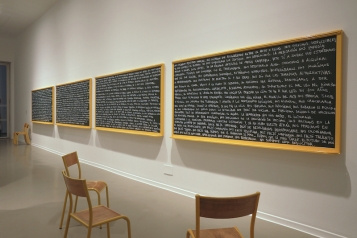
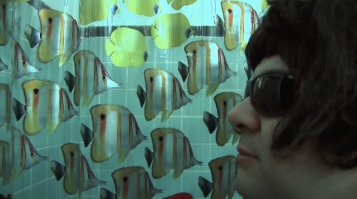
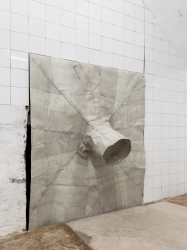
What to See During This Year’s ARCOmadrid
From a sprawling exhibition dedicated to the influence of Indigenous art of the Americas to Stephanie Comilang’s first solo show in Spain
Artists and secondary-school teachers Marta de Gonzalo and Publio Pérez Prieto have a long history of developing critical curricula and running experimental, inclusive education projects with art centres, notably as part of the Las Lindes working group, which launched in 2009 at the Museo Centro de Arte Dos de Mayo. This exhibition, however, is born from the frustration that the duo’s aspirations for young people have largely been hampered within the state-school system. A series of panels made from gouged and painted desks depict scenes derived from several ‘disobedient’ classroom performances realized with their students. The accompanying video Una Mañana (One Morning, 2024) wryly pictures the artists’ hope for an emancipated educational space as a school desk and chair set up in different outdoor locations, such as a beach or a field. Shot in six 50-minute sequences, its structure mirrors the timetable of a school day in Spain.
Marta de Gonzalo and Publio Pérez Prieto, El Sueño (The Dream), 2023, engraving and acrylic inks on laminated board, 180 × 80 cm. Courtesy the artists and Galería Formato Cómodo

Also included in the program La orilla, la marea, la corriente: un Caribe oceánico, curated by Sara Herman y Carla Acevedo.
VICTORIA GIL
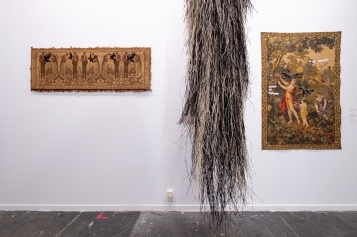
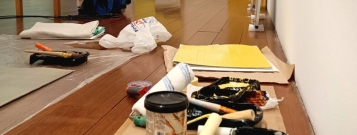
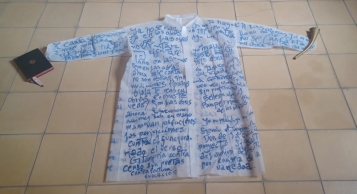
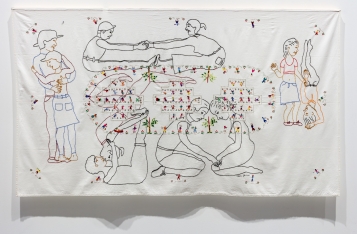
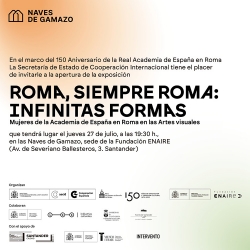
Roberto Aguirrezabala, Fernando Baena, Jorge Barbi, Ana Condado, Marcelo Expósito, Marta de Gonzalo y Publio Pérez Prieto, Nuria Güell, Rogelio López Cuenca, Gregorio Méndez, Ana Navarrete, Lola Pérez, Espe Pons.
En el trabajo que nuestros artistas presentan, Más muertas vivas que nunca (2002), una joven mujer muerta nos habla al oído. Tras participar en las colectivizaciones de tierras en Extremadura y Andalucía, fue una de las 4.000 personas fusiladas en la Plaza de Toros de Badajoz a partir del 14 de agosto de 1936, día de la toma de la ciudad por las tropas franquistas durante la Guerra Civil. Ella habla desde la muerte, en espera de lo que los vivos pueden hacer de sus sociedades.
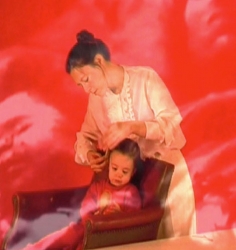
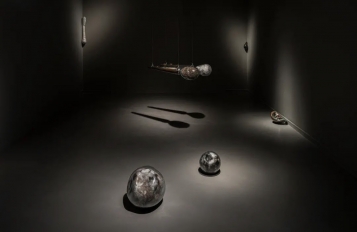
Presentación del libro "Berta Cáccamo. Horas Felices"
Evento a cargo de Juan de Nieves en la Galería Formatocomodo
Publicado por: Patio Herreriano, Museo de Arte Contemporáneo Español.
Textos: Juan de Nieves y Patricia Dauder.
Diseño: Tipos móviles.
Coordinación editorial: Juan de Nieves.
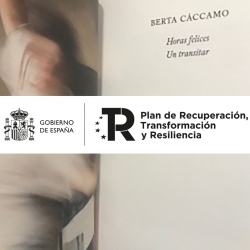
https://www.condeduquemadrid.es/actividades/pan-y-circo
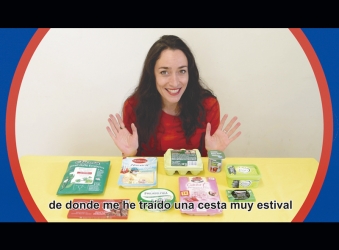
Nov 19, 2022 - Apr 23, 2023
- Adán Vallecillo Alia Farid Álvaro Barrios Ana Mendieta Candida Alvarez Christopher Cozier Cosmo Whyte David Medalla Deborah Jack Denzil Forrester
- Donald Rodney Donna Conlon and Jonathan Harker Ebony G. Patterson
- Engel Leonardo .y mas
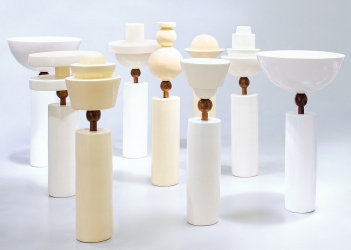
11 November 2022 - 21 May 2023
Centro Galego de Arte Contemporánea
First floor
Curated by Alberto Carton and Santiago Olmo
Artists participating in the exhibition:
Vito Acconci, Janine Antoni, Miguel Ángel Blanco, Mar Caldas, Benvenuto Chavajay, Mona Hatoum, Kubra Khademi, Manolo Laguillo, Juan Lesta, Priscilla Monge, Jürgen Partenheimer, Damián Ucieda, Oriol Vilanova
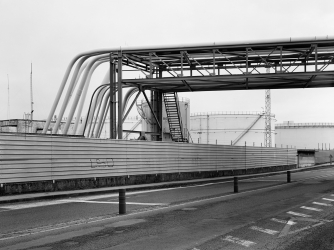

CRITICS`PICKS ARTFORUM
A
A
Berta Cáccamo, Descrición do día (Description of the day), 1988–90, mixed medium on canvas and board, each piece 27 1/2 x 21 1/2ARTFORUM
Berta Cáccamo
MUSEO PATIO HERRERIANO DE VALLADOLID
Calle Jorge Guillén, 6
January 29–May 15, 2022
After living in Barcelona, Paris, and Rome, Berta Cáccamo returned in the mid-1990s to her native Galicia, where she made “Horas felices” (Happy Hours), a series of one-line abstractions in which a thick, sinuous brushstroke expands across each canvas, folding in on itself like an intestine. The series lends its title to this exhibition, which brings together paintings by the artist dated from the late 1980s to 2018 alongside notebooks, sketches, annotations, and a collection of knickknacks and discarded objects.
These years map a trajectory, from the discreet informalism of her early output, to the embrace of a more autonomous stroke—slow and meandering—to colorful abstractions, to a more process-oriented approach open to various mediums and techniques. In untitled works from 1990, the paper absorbs the ink, creating organic marbling patterns. Other times, as in Blue, 1996, the brush is dragged so that, with the winding or straightness of the gesture, paint accumulates on the edges of the stroke or is dispersed by the movement of the bristles. From her own statements, we know that Cáccamo conceived of painting as a method of introspection where literature and philosophy also played a part. Here, we are deprived of her words, left to somehow content ourselves with a body of work cut tragically short with the artist’s death in 2018, at age fifty-eight. Seeing how the same motifs and colors emerge repeatedly in her work, we can fantasize that painting, even in the absence of its author, continues to converse with her.
Translated from Spanish by Michele Faguet.
https://www.artforum.com/picks/berta-caccamo-88399
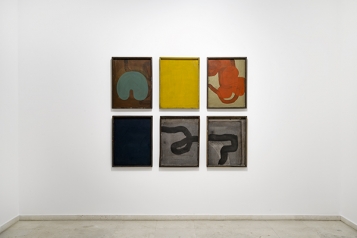
|
|

A Drunken Boat: Eclecticism, Institutionalism and Disobedience in the ‘80s
Nouvel Building, Floor 0
In the 1980s, different exhibitions sculpted the sensibilities of the time. For the 1982 Documenta in Kassel, the curator Rudi Fuchs contemplated the possibility of titling the exhibition The Drunken Boat, after Arthur Rimbaud’s poem, in reference to an art drifting aimlessly, wandering outside of “style wars”. This absence of hegemonies would end up translating into an eclecticism of forms that defined artistic practices in that decade. Part of historiography interpreted it as a shift towards conservative values, where the absence of history and critique, as well as the recovery of artistic individualism, corresponded to a social and political reality dominated by the Reagan-Thatcher era.
The fledgling democracy in Spain would drive an institutionalisation of art that replaced social struggles against Francoism, and within this context the creation of the ARCO Art Fair and the Centro de Arte Reina Sofía came with an intense policy of national and international exhibitions, and a return to painting as the lingua franca. Opposite this apparent conservatism, a series of practices of disobedience rose to the surface, expressing their discontent with institutions and facing crises such as the AIDS pandemic. An art that embraced post-punk attitudes, new versions of feminism and the subversion of bodies.
https://www.museoreinasofia.es/coleccion/episodio-6
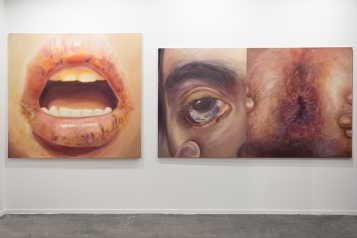
Fernando Sánchez Castillo, Ex Positio. Albarrán Bourdais
Gonçalo Sena, Circular Spaces. Galería Heinrich Ehrhardt
Juan López, Surco. Galería Juan Silió
Julian Rosefeldt, Penumbra. Galería Helga de Alvear
Los Torreznos, Las Palabras y las Cosas. Galería Freijo
Martin Llavaneras, Delta. Intersticio
Mercedes Azpilicueta, Katalina, Antonio, Alonso. NoguerasBlanchard
Miquel Mont, Deseos Borrados Recoloreados. Galería FORMATOCOMODO
Oriol Vilanova, Con los ojos abiertos en la oscuridad. Galería Elba Benítez
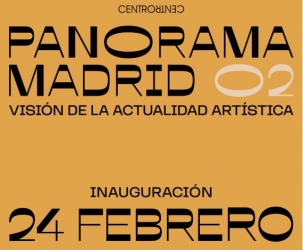
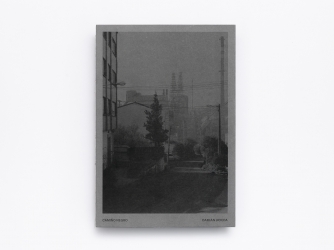
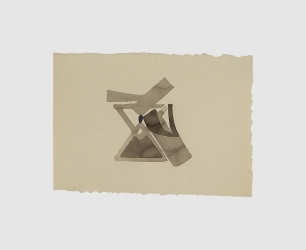
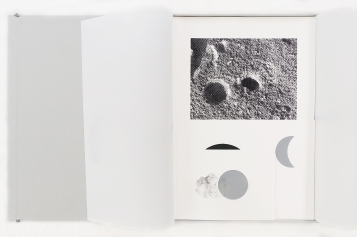
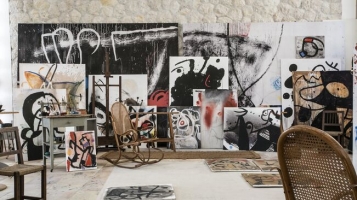
Exposición colectiva : „Ehrenfeld“
24 de abril - 29 de mayo de 2021
Daniel Boccato, Jonathan Binet, Samuel Francois, Max Frintrop, Manor Grunewald, Agata Ingarden, Jens Kothe, Colin Penno, Johanna von Monkiewitsch, Evan Robarts, Loup Sarion
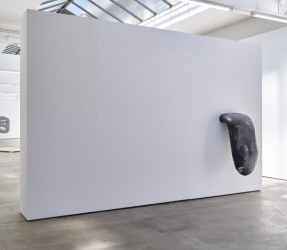
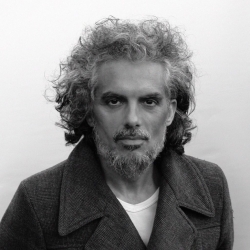
Inauguración 1 de octubre a las 20 horas. Caja Blanca de Las Cigarreras
Exposición dentro de la Convocatoria Buitblanc de la Concejalía de Cultura, Centro Cultural Las Cigarreras.
Rosana Antolí / Gonzalo Puch / Zilvinas Landzbergas / Julia Mariscal / Rodríguez-Méndez / Eduardo Infante. Comisaria, Diana Guijarro
La exposición Ensayo antes de la actuación es un proyecto de investigación curatorial que busca generar un territorio en proceso de crecimiento. Una especie de fase preparatoria donde las diferentes propuestas se encaminan a reflexionar sobre la presencia corporal, sobre las posibles interacciones entre los cuerpos y el espacio, y en cómo las partes pueden convertirse en un todo complementario.La propuesta pretende profundizar en las múltiples posibilidades que nos brinda el ensayo y el error entendidos como experimento abierto a la incertidumbre, una prueba
para conocer si algo funciona o no y en base a esto, ajustarnos y enlazarnos en una supuesta sincronización dentro de un entorno que se encuentra marcado por diferentes pautas.De esta forma la exposición se entiende como un espacio dinámico, un lugar que los artistas harán crecer exponencialmente a través de una serie de actividades que
buscarán la participación activa de los diferentes públicos.
La heredad.
Papel 50x70cm. Grafito y tintura dorada. La Habana, Cuba 2018 (en proceso).
Simultáneamente un grupo de niños y niñas menores de 6 años dibuja sobre papel una escalera, tomando
como modelo una escalera de mano real situada en el mismo espacio donde sucede la acción.
Una vez finalizados todos los dibujos el artista interviene sobre las horizontales de esos dibujos con líquido
dorado.
Esta obra está en proceso desde enero del 2018, fecha en la que se inició en la ciudad de La Habana con una se- rie de 6 piezas. Actualmente se ha repetido esta acción en el CCCC - Centre del Carme Cultura Contemporània, Valencia. y proximamente en Las Cigarreras de Alicante.
Protocolo:
- Un grupo de niños y niñas no mayores de 6 años.
- En la sala se colocará una escalera de mano apoyada en la pared y que sea visible para todos los niños.
- Después de la explicación sobre en que consiste la actividad, se le entregará un lápiz a cada niño.
- Dibujarán sobre el suelo descalzos.
- La orientación de la escalera en el papel puede ser tanto en la vertical como la horizontal del papel.
- El que lo desee podrá repetir el dibujo tantas veces como quiera.
- Esta acción se repetirá si fuese necesario o posible con diferentes grupos de niños y niñas.
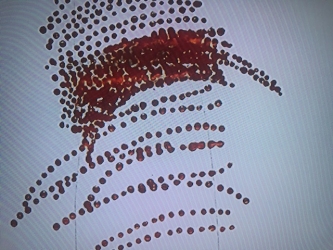
Fundación DIDAC
19 september / 27 november
Curator: David Barro
Pongo mi pie desnudo en el umbral is an exhibition project with three layers: a short story written by me for the occasion, the exhibition’s device and a collaboration with the artist María Roja through a specific performance.
The title —a verse stolen from the galician poet José Ángel Valente— leads us to think of a story that could end or begin, but a story that goes forward by walking, touching, stepping, as happens in the short story that forms the backbone of this whole project and the exhibition.
This short story is the tale of a find: the travel diaries of a woman named Dirse who made a pilgrimage from Antwerp (Flanders) to A Guarda (Galicia), sometime between the 16th and 17th centuries, and who spent her last days on Mount Santa Trega, looking at the river mouth of the Miño, the threshold that separates Galicia from Portugal.
The exhibition is presented as a collection of fragmented and overlapping points of view on the history of Dirse that punctuate the room and articulate a spatial narrative around the landscape, spirituality, ritualism, architecture and vernacular forms.
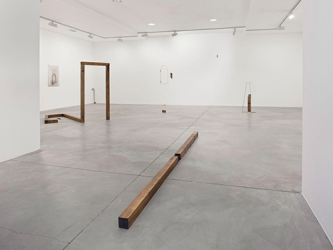
|
|
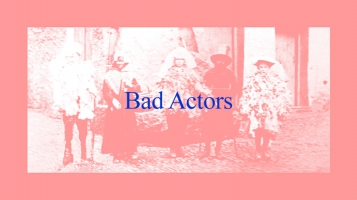
M+B is pleased to present Cannibal Valley, an exhibition of new works by Daniel Boccato and Loup Sarion, the artists’ first exhibition with the gallery and in Los Angeles. The exhibition runs from September 14 through November 9, 2019, with an opening reception on Saturday, September 14 from 6 to 8 pm.
Cannibal Valley brings
together the sculptural objects of Loup Sarion and Daniel Boccato,
united by the artists’ collaborative friendship and interest in abstract
figurative forms.
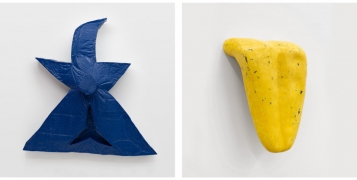
visit website
ENGEL LEONARDO
Farol
MAC Niterói
Rio de Janeiro, Brazil
April 14 - August 4, 2019
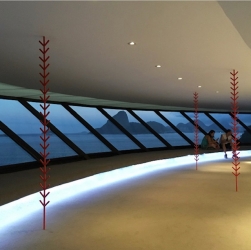
|
|
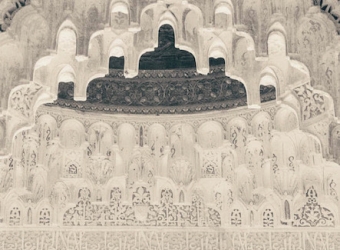
In "Manoguayabo", the works use as a starting point the research on the work of Flavio de Carvalho and Lina Bo Bardi, as well as the painting "O lago" by Tarsila do Amaral and the traditional Dominican egg kills. Creating a conversation with the viewer which is developed through the use of structures of geometric character and modernist ancestry, Leonardo seeks to reinterpret elements of the nature of the Caribbean and the tropics; a reduction of forms, colors, and relationships that account for an immensely rich but equally complex context.
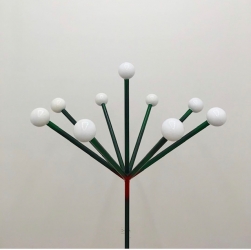
|
|
|
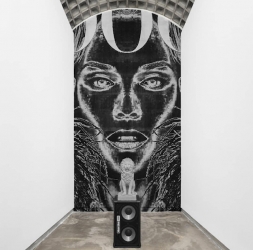
RODRIGUEZ-MENDEZ carries out an editorial and exhibition project for CICLÓN, coordinated by David Silva and Misha Bies.
Opening the 31 of July
Santiago de Compostela
The work of Rodríguez-Méndez analyzes the material principles of sculpture and the essential physical experience of man in projects that combine action and sculpture to explore the interaction or balance of energies between the two.
The artist's use of forms and materials such as cylinders, peat, oil, sound, words and the body are understood as intangible, as elementary or absolute geometries. These questions and conditions the processes of construction and decision making that leads to the final result.
Using languages of marginal influence in the exhibition space, Rodríguez-Méndez exploits the incorporation of materials and the open and latent state of their condition to configure a game of loss and restitution that testifies to the definitive and essential nature of life and change.
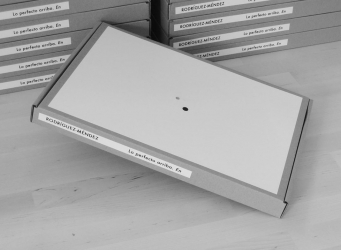
|
|
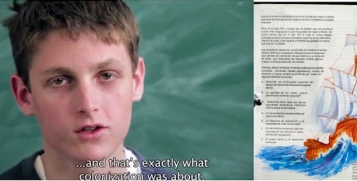
Only a few months after its official opening, Museo Patio Herreriano presented an ambitious exhibition entitled Cuatro dimensiones, a project that seeked to survey the developments in the field of sculpture taking the works in the Colección de Arte Contemporáneo as a point of departure.
Una dimension ulterior, installed in five large rooms on the second and third floors of our Museum, takes that show as a reference in order to explore the developments in the field of sculpture up until our present day. It is formed by some of the works included back then and many belonging to contemporary artists working today. If Cuatro Dimensiones eluded the grand tales of Art History, Una dimensión ulterior seeks to enhance the value of minor histories. This is why we have chosen the indefinite article “Una” (“a”) instead of the definite article “La” (“the”), because, as it is well known, there is no longer room for univocal readings of the art of our times, and the one we have here at stake is only one of many other possibilities. However, what we try to put forward here is our humble ambition to present some of today’s key aspects of sculptural practice.
Artistas participantes: Ignasi Aballí, Elena Aitzkoa, Elena Asins, Jorge Barbi, David Bestué, Elena Blasco, Jacobo Castellano, Jordi Colomer, June Crespo, Ángela de la Cruz, Patricia Dauder, Diego Delas, Pepe Espaliú, Ángel Ferrant, Nuria Fuster, Fernando García, Christian García Bello, Cristina Iglesias, Pello Irazu, Carlos Irijalba, Antoni Llena, Eva Lootz, Juan López, Asier Mendizabal, Mitsuo Miura, Itziar O Okariz, Jaime Pitarch, Adolfo Schlosser, Fernando Sinaga, Teresa Solar, Julia Spínola y Susana Solano.

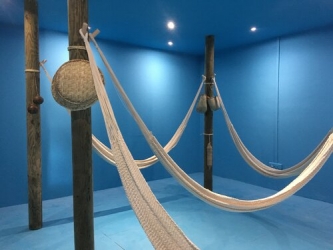
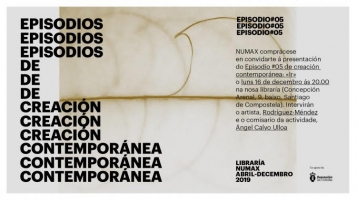
Currently working on her new project at
SÍM Residency, Reykjavik (Iceland)
artist websiteVisita la WebVisita la WebVisita la Web
Visita la WebVisita la Web
Visita la Web
Visita la Web
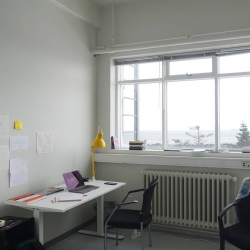
RODRÍGUEZ MENDEZ
TOTALIDAD E INFINITO*
Economías de la transferencia en otro(s) tiempo(s)
Fragmentos que Representan al Mundo
EVA FÁBREGAS + ROSANA ANTOLI + LAIA ESTRUCH + GERARD ORTIN + RODRÍGUEZ MENDEZ
Sala Carlos Pérez del Centre del Carme de València
February - June, 2019
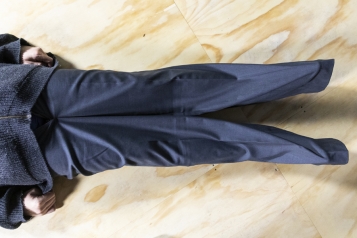
The present work is constituted by several rectangular tables that, leaning on one another forming different angles and inclinations, reach the verticality in the wall. The tables create different strata or phases: a physical progression that affects the color in its luminosity and causes a series of gradations on the scale of the black, contained at its ends by the wood painted in red that act as a visual limit. Within the minimalist aesthetic in which this early work by Nacho Criado is included, innovative in the Spanish art scene, the dedication to Rothko acts as an evocation not only of the chromatic qualities of his painting, but also of an idea of absolute art that Simón Marchán has defined as "contemplative, pure and reductionist, in which the real and the virtual are already counterbalanced".
| www.march.es |
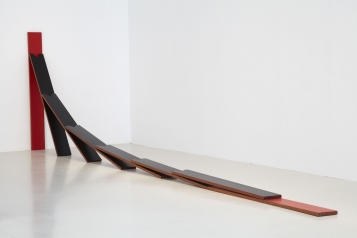

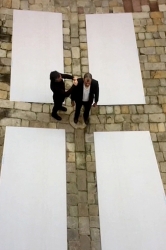
Galerie de l’artothèque – Salle du Temple, place Notre-Dame, 35500 Vitré
Commissariat : Isabelle Tessier
Exposition visible du 2 juin au 16 septembre
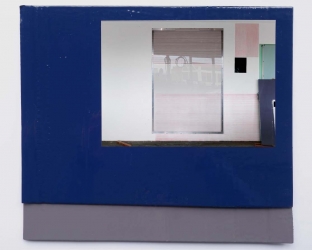
Viewers embark on a journey to decipher the fragments in Mejuto’s paintings: a swath of robe, a wedge of building, a piece of brocade. The small canvases, like lost puzzle pieces, conjure memories of complete masterpieces. Abounding with citations and suggestions, the exhibition reveals the contemporariness of the well-known images that form the basis of Western art. It is with good reason, then, that a number of titles reference burials and resurrections. Each generation pays, in its fashion, its debt to its ancestors.Translated from Spanish byJanie Brodie.—Joaquín Jesús Sánchez
https://www.artforum.com/
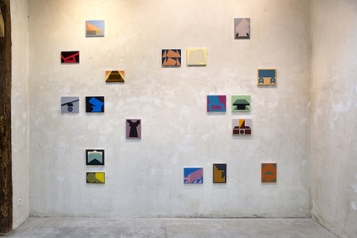
presenting simple shapes of striking colors.
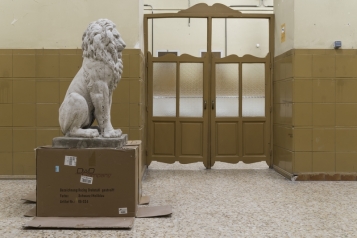
My paper is called The Medium is the Massage: Racialized Mediums
http://www.blackportraitures.i
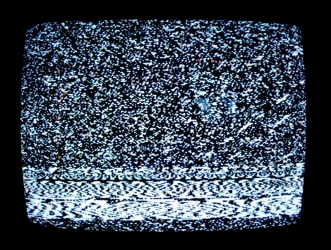
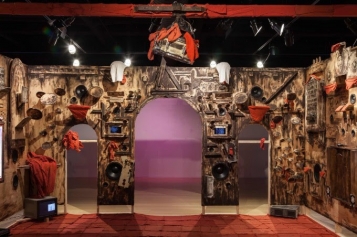
ART CENTER/SOUTH FLORIDA RESIDENCY
Mar Guerrero ha sido seleccionada para realizar una estancia en residencia en Art Center/South Florida, Miami. Esta residencia es una oportunidad que se ofreció a los artistas baleares participantes en el programa de formación “Les Clíniques d’Es Baluard”, cuyo objetivo principal es fomentar la profesionalización del sector y facilitar las herramientas de análisis, conocimiento, recursos y seguimiento de la práctica creativa y de pensamiento desde el museo. Por ello, la residencia en el Art Center/South Florida constituye una gran oportunidad para conocer el contexto artístico de Miami así como los programas de formación de artistas desarrollados desde esta institución artística. Esta residencia es posible, además, gracias a la colaboración mantenida entre Es Baluard y el Illenc. La residencia tendrá lugar durante el mes de marzo de 2018 y permitirá participar a la artista en el Program for Applied Artistic Research.
http://www.artcentersf.org/

la pelicula Ta acorda Ba tú el Filipina forma parte de la coleccioón del Museo Nacional Centro de arte Reina Sofia .
http://www.ficcifestival.com
Conflictos y dictaduras; colonizadores y colonizados; represión y ansias de libertad; totalitarismo y democracia, se reúnen en esta segunda versión de “La guerra y la paz”, ficciones y documentales que dejan oír voces, reclamos, preguntas, soluciones. Películas que se hacen cargo del lugar del cine no como un simple notario de la realidad sino como un instrumento de transformación.
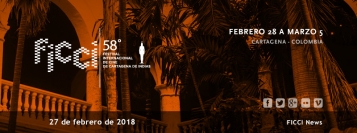
Christian García Bello.
If Christian García Bello’s second show at this gallery seems to stage no major overhauls of his first, progress nonetheless lies within the reaffirmation of his perseverance. In this light, the exhibition represents a remarkable step forward in his still-young career. Titled, somewhat awkwardly, “Ahora no es pretérito todavía” (Now it is still not the past), the show reflects on how our relationship with time informs our perception of space. His drawings and sculptures share a precise blend of representation and abstraction, mathematical rhetoric and transcendent nebulousness, as he draws from rigorous classical humanism and from hazier Romantic movements in equal measure.
On entering the gallery, one easily detects the relevance of rhythm in his exquisite installation. It stems from a careful study of human proportions in the context of the gallery’s singular architecture. Drawing out our gaze, a vertical wooden form expands toward the wall, punctuated by both drawings and sculptures that share a distinctive ingredient: On all of them, thin layers of wax subtly accumulate to produce dense surfaces with an enthralling aura. They represent architectural motifs as well as shadows and hollow spaces, relentlessly swinging between the tangible and the ethereal. The three wooden sculptures on view are found objects that evolve into abstractions evoking a melancholic sense of longing, while unambiguously reflecting shapes and symbols drawn from traditional art of Galicia. Apathetic toward fuzzy trends and unnegotiably committed to austere formalism, García Bello understands his work as a body of complex textures providing a humble and serene take on the infinite.
— Javier Hontoria
All rights reserved. artforum.com is a registered trademark of Artforum International Magazine, New York, NY
https://www.artforum.com/?pn=picks§ion=eu#picks71555

is developing her project Cosmic networks at the Nirox Foundation (South Africa), within the residency program of El Ranchito de Matadero Madrid – AECID.
Dates: October 2017
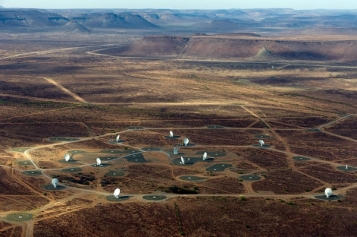
La comisión evaluadora ha estado presidida por Chus Martínez, directora del Instituto de Arte de la Academy of Art and Design de Basilea, e integrada por Laura Baigorri, Eugeni Bonet, Nuria Enguita,; Karin Ohlenschläger, María Pallier, Manuel Segade, ; Blanca de la Torre, y Virginia Torrente,
1986) toma como punto de partida el Estudio filosófico del tiempo recogido en las Confesiones de San
Agustín y su definición del hombre como centro del universo. A partir de ahí, García Bello trabaja
con escultura y dibujo, tomando como escala de trabajo su cuerpo y como referente el paisaje y
la arquitectura más esencial
http://www.elcultural.com/revista/arte/El-arte-nos-recibe-en-casa/40018

presents his new solo exhibition nut, nuts, nut job at the gallery Sorry we're closed in Brussels.
Fechas: 7 de Septiembre - 28 de Octubre 2017
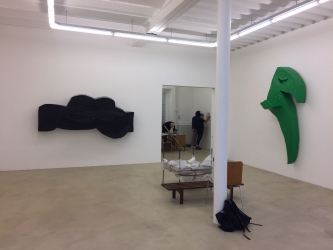
Somewhere. nowhere. Utopia.
Twelve young emerging curators from China and Germany will stage a joint exhibition following the traces of "Utopia". Inspired by their research on the contemporary curatorial practice at the documenta 14 in Kassel and Skulptur Projekte in Münster the team explores utopian thinking in matters of space and time by means of visual arts, installations, performances and interventions in the outdoor and indoor space.
The two-part exhibition will be presented at Starke Foundation in Berlin-Grunewald as well as at Zentrum für Kunst und Öffentlichen Raum and Schlosspark Biesdorf.
Participating artists:
Dominik Annies, Chen Baiyi, Janosch Becker, Florian Birk,Juan Blanco, Felipe Duarte, Shi Fu, Philipp Hainke, Lisa Herzog, Fangling Huang, Qin Lingsen, Luo Qiang, Li Quing, Ana Esteve Reig, Natalia Irina Roman, Felipe Sánchez, Liu Shihao, André Stache, Deo Gisa Brian Senyondo, Annika Stoll, Daniel Theis, Sabine Maria Voltz, Victoria Wald, Tao Xia, Yan Xiang, Ligeng Zhang
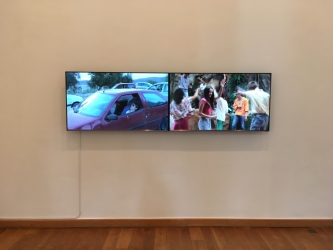
Associação Cultural Videobrasil and Sesc São Paulo announce the list of artists who will be participating in the 20th Sesc_Videobrasil Contemporary Art Festival, one of the leading plataforms for contemporary art in the Global South, to be held from October 2017 through January 2018 in São Paulo. Nearly 2,000 artists from 109 countries submitted works during the Open Call for the 20th Festival. The Brazilians Ana Pato, Beatriz Lemos and Diego Matos, and the Portuguese João Laia collaborated with the chief curator Solange Farkas, and were responsible for selecting the 50 artists from 25 countries who will showcase their works in this new edition.
Engel Leonardo
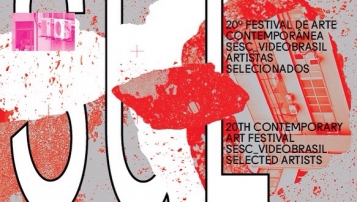
5 de mayo 21 de julio
LUGAR: Museo Municipal de Lalín
ARTISTAS: Emilio Araúxo, Misha Bies Golas, Emma Crichton, Manuel Eirís, Tamara Feijoo, Christian García Bello, Irene Grau, Rubén Grilo, Carlos Maciá, Álvaro Negro, Carme Nogueira, Kiko Pérez, Alejandra Pombo, Bandia Ribeira, Lua Ribeira, Rodríguez-Méndez, Armindo Salgueiro, Diego Santomé, Xoan Torres, Damián Ucieda e Diego Vites.
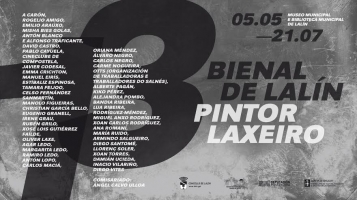
participa en la muestra Dende o Panóptico: Cada cela unha fiestra.
La exposición O Vello Cárcere de Lugo. Da guerra á posguerra está compuesta por un libro de memorias, notas y cartas de los presos a las familias, entre otros. También forma parte de ella la recreación de una celda individual en la época de la guerra
13 artistas repiensan desde la actualidad la Vieja Cárcel. Para eso, la muestra Dende o panóptico: cada cela unha fiestra, que reúne por primera vez una serie de trabajos de diferentes figuras del arte gallega
Para recuperar la memoria de las mujeres antifascistas borradas de la historia, el módulo femenino acogerá la exposición itinerante Vermellas (Chamábanlles rojas). Se componen de 20 paneles con textos.
Fechas: A partir del 28 de Abril, Centro Sociocultural O Vello Carcere de Lugo.
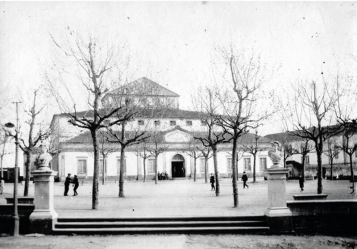
Rodriguez-Mendez curador Angel Calvo Ulloa.
El resultado del trabajo en la residencia Paulo Reis .
http://ateliefidalga.com.br/
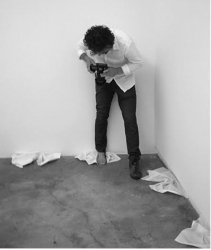
Engel Leonardo’s practice performs a difficult balancing act: synthesizing Caribbean geography and visual culture without reducing its complexity. Research into the craft aesthetics of his native Dominican Republic manifests through several forms. Titled ‘Ansapit’, the Creole name for one of the four main land crossings from Haiti, the show shares the name with a dress piece whose pattern documents the popular architecture of the region. Leonardo’s Vevés paintings made with plantain juice and depicting abstracted voodoo symbols, and his Lista series, which transforms traditional basketwork found in the borderlands between the Republic and Haiti, further explore porous limits: between neighbouring countries, art and design, and high modernism and a craft vernacular.
https://www.frieze.com/article/critics-guide-madrid-0
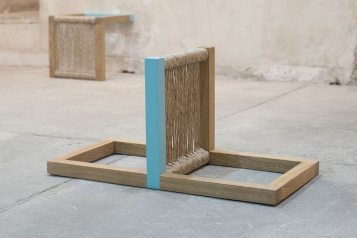
"...al menos un modo provisional de asentarse en un lugar" - Del 14 de diciembre al 22 de enero - Azkuna Zentroa (Bilbao) y del 20 de enero al 28 de febrero - Montehermoso (Vitoria-Gasteiz)
La exposición …al menos un modo provisional de asentarse en un lugar es el resultado del programa Komisario Berriak, iniciativa de DSS2016EU en colaboración con Azkuna Zentroa (Bilbao), Tabakalera (Donostia), Artium y Montehermoso (Vitoria-Gazteiz) que apoya la formación de nuevos comisarios. En estas tres ciudades han tenido lugar a lo largo de 2016 los encuentros en formato de laboratorios en torno a las prácticas curatoriales que concluyen con esta muestra
Artistas: Allora & Calzadilla, Emilio Araúxo, Pedro Barateiro, Zigor Barayazarra, Josu Bilbao, Alex Cecchetti, Lúa Coderch, Janice Kerbel, Irene Kopelman, Louisa Martín, Amaia Molinet, Enrique Radigales, Rodríguez-Méndez, Eriz Moreno, Eulàlia Rovira & Adrian Schindler y Tina Vukasović.
Equipo curatorial de Komisario Berriak: Valerio Del Baglivo, Ángel Calvo Ulloa, Irati Irulegi, Laura Diez, Leyre Goikoetxea, Natasha Kadin, Pilar Cruz, Iker Fidalgo, Sonia Fernández Pan y Juan Luis Toboso. Acompañados por Aimar Arriola, Tamara Díaz Bringas y Sabel Gavaldón.

Adriana Martínez
Andrés Pereira Paz
Caribbean Backbone Research Institute
Daniel Steegmann Mangrané
Eduardo Navarro
Engel Leonardo
Gala Berger
Jessica Kairé
Jorge González
Marcelo Cidade
Opavivará
Vivian Suter
Sección de Autogestión:
En un espíritu de apertura, colaboración, improvisación y auto-gestión, los curadores de la Segunda Gran Bienal Tropical invitan a todo aquel artista/colectivo que desee participar a traer sus propias obras e instalarlas personalmente en el Km 13 de la Carretera 187 en las playas de Piñones, Loíza el sábado 10 de diciembre a partir de las 10am.
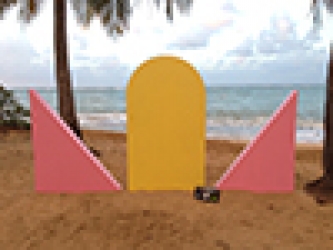
Exposición de los proyectos realizados con la Ayudas al Audiovisual de la Fundación BBVA.
http://cultura.elpais.com/
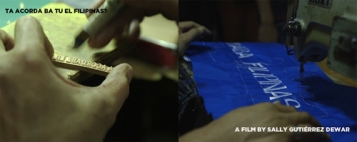
- Escuchar con los ojos. Arte sonoro en España, 1961-2016
The exhibition Listening with the eyes, Sound Art in Spain (1961-2016) was created thanks to the invited curators José Iges and José Luis Maire, and with the collaboration of many other artists and experts. Its aim is to show the origins, the diversity of the trajectories and the vitality of the Art Sound made in Spain since 1961.
Through the extended range of more than 400 selected works and a large documentary material, the exhibition wants to make visible (and above all audible) the sound organised with artistic criterias in Spain, even in times (during the 60's and 70's) when the proper term “Sound Art” hadn't been created yet.
Dates: October 14th, 2016 - January 15th, 2017
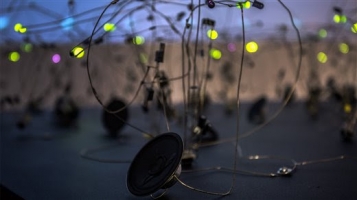
Asphalte Charleroi
High on Place de la Digue stands the elegant outline of a figure. Sometimes it appears to be sleeping. At others, it is dancing. This sculpture, neither man nor woman, neither adult nor child, has been inspired by giants. Just as we dress up folkloric characters to suit the season, this figure transforms as the year progresses. At once a public bench, an esplanade and a family-sized picnic table, the giant is a meeting point, but it is also a collection of climbable shapes of different heights. As a deconstructed puppet, each part of the Géant de la Digue’s body is interchangeable: the hand can easily become a crown, or the leg a sword.
Asphalte Charleroi
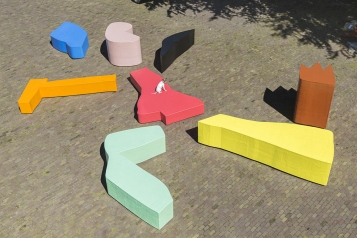
con los artistas : Miquel Mont. Farah Atassi, Francis Baudevin, Vincent Beaurin,
Lisa Beck, Trudy Benson, Martin Bissière, Jessica Stockholder, Soizic Stokvis,
Blair Thurman, Delphine Trouche, Janaina Tschäpe, Emmanuelle Villard, Sophie Whettnall, Wallace Whitney,
Peter Zimmermann .
www.cacmeymac.fr
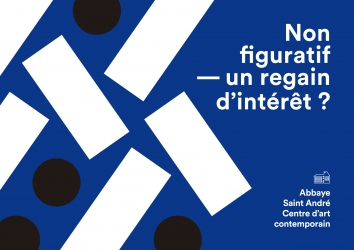
8 de julio al 2 de octubre 2016.
En torno a los problemas epistemológicos y visuales que propone Elegía de un viaje de Sokurov y a partir de otras obras emblemáticas de la Colección CGAC —Mona Hatoum, Liam Gillick, José Pedro Croft o Nacho Criado—, se plantean contextos de acompañamiento y diálogo con obras de otras colecciones públicas e privadas asociadas o vinculadas de alguna manera con el CGAC.
- See more at: http://cgac.xunta.gal/ES/exposicion-detalle/64/reler_a_coleccionGAL#ad-image-0
- http://cgac.xunta.gal/ES/exposicion-detalle/64/reler_a_coleccionGAL#ad-image-0
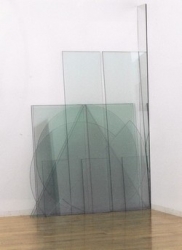
TRAZAS DISTANCIADAS by MIQUEL MONT
May 31st at 9pm.«Trazas Distanciadas» (Distanced traces) is a reflection around a serie of projected images, taking the form of perfomative conference. It builds itself according to a free association between images and ideas, contrasting so with the analytic constructions of the ruling discourses and its rhetorical patterns. Privileging the sensible, the subjective -that belong to the perception as pattern and place of the knowledge’s subject-, and relating it with the economic, social and aesthetic order of our time.
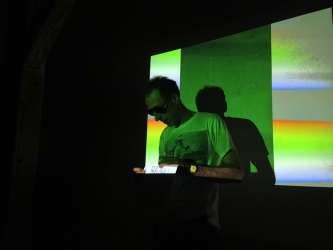
The exhibition spaces: Palma, Cuenca and Madrid
Sound Art in Spain (1961–2016) traces the origins, history, diversity and vitality of the sound art produced in Spain from 1961 to the present. By means of the range and variety of works selected and extensive documentation, it purports to make visible (and, above all, audible) the ways in which sound has been employed to create artistic works in this country as far back as the 1960s and 1970s – decades before the term 'sound art' was coined to describe this phenomenon.
In addition to providing a fresh look at works from the foundation's own collection, Sound Art in Spain (1961–2016) will highlight the contributions of Zaj, Isidoro Valcárcel Medina and Lugán (Luis García Nuñez), whose pioneering experimental and cross-disciplinary works paved the way for the emergence of sound art as a genre, as well as an overview of works by a wide variety of other artists such as Walter Marchetti, Juan Muñoz, Francisco López, José Antonio Orts, Eduardo Polonio, Esther Ferrer, Juan Hidalgo, Wolf Vostell, Javier Aguirre, Nacho Criado, Francesc Abad, Eugènia Balcells and Eugeni Bonet.
http://www.march.es/arte/palma/exposiciones/arte-sonoro/espacios.aspx?l=1
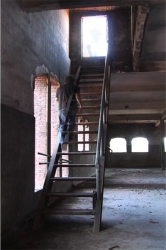
Daniel Boccato´s ´Blogface´at formatocomodo
NADA Art Fair Offers the Wacky and the Political, Plus Basketball, The New York Times
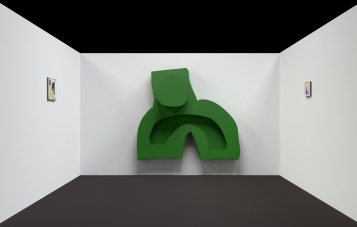
www.elcultural.com/galerias_

www.lehavre.fr/node/39934
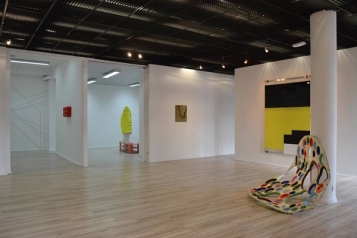
Samuil Stoyanov's work at Focus Bulgaria is:
20 Billion Stars, 2012 Action, ceramic stars, photographs, plexiglas The present work "20 Billion Stars" is part of a series of similar boxes and uses as material photo-documentation and artefacts of action (of the same name) held by the artist for 30 days in the summer of 2011.
During the renovation of the central square of his home-town (Dobrich, Bulgaria) Samuil Stoyanov goes regularly to the work-site and casts ceramic stars from red clay in the still wet concrete. Inlaid and built up stars creates a new map of a universe, which, unfortunately, will probably remain undiscovered forever. The square named "Svoboda" (Freedom) has a total area of about 150,000 square meters, which are overlapped entirely. The funding of the reparation of "Freedom" Square is OPRD of the European Union and the action of the artist is made within the project "Art of Urban Intervention", which is supported by the Culture Programme of the European Union.
Focus Bulgaria at viennacontemporary 2015
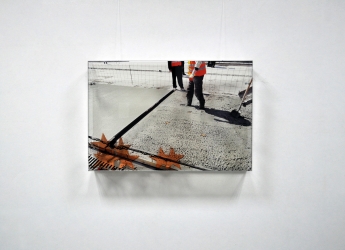
www.stadt-zuerich.ch/aaa
AAA: Art Altstetten Albisrieden Public space of Zurich Altstetten and Zurich Albisrieden AAA: Art Altstetten Albisrieden
will feature nearly 30 artists challenging theirselves with the questions of city development, neighbourhood history, aesthetic in public places and other themes rooted in the urban context. The artworks will be grouped in several geographical clusters that are Vulkanplatz/Lindenplatz, Flurstrasse/Zollfreilager, the heart of the Albisrieden village and the Eichbühl cemetery. Several satellite projects are also planned in the Zürich-West area. Curators: Christoph Doswald, Bettina Burkhardt (project direction) Special events: Jun 12, 5pm - 9pm, opening
- Open: Saturday, 13 June 2015
- Close: Sunday, 13 September 2015
- Address: Public space of Zurich Altstetten and Zurich Albisrieden
- Web: https://www.stadt-zuerich.ch/aaa
- Admission: Free
- Transport: Vulkanplatz, Bahnhof Altstetten
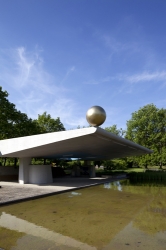
Como tizón quemado es una agilización del proceso creativo de Christian García Bello (A Coruña, 1986) hacia la rotundidad contenida del gesto, y hacia la severidad a ultranza de un carácter en evasión concreta y ciertamente radical. Esta evasión es fidelidad hacia uno mismo, hallazgo de lo temporal que tiende y se estratifica hacia lo superior; y es atributo de la individualidad trascendente que, además de la integridad que se le exige, es también producto de la inflexión de la reflexión y su conversión en objet la materialidad tridimensional, no equívoca y, menos aun, derivativa y desinencial, en la cual refugiarse, hallarse, y refundarse. La complexión no banal de la instalación site-specific establece una unidad lógica con el espacio (vacío, luz y ciertas perspectivas aparentes) que particulariza el medio envolvente, y lo torsiona en una sucesión de tensiones verticales y horizontales reivindicativas de una geometría pura y razonada. Y la utilización de la madera, del grafito, de la cuerda, texturiza esa armazón primaria, insistente y focal, afirmación de lo inviolable del hombre y de su unicidad sustantiva.
http://cgac.xunta.es/ES/exposicion-detalle/55/christian_garcia_belloGAL#ad-image-0
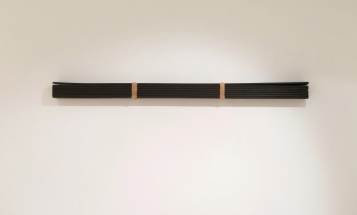
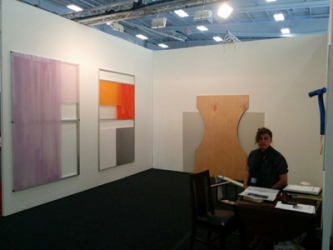
http://www.aarome.org/it/content/nero-su-bianco
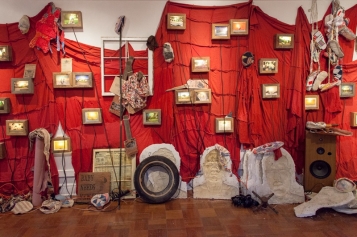
Itinerarios is a yearly event which presents work by awardees of the Botín Foundation"s Visual Arts Grants. Year after year, it acts as a thermometer gauging the current state of the art world and it also provides a snapshot of its predominant trends.
Itinerarios XXI features works produced in 2013-2014 by nine artists: Carles Congost (Gerona, 1970), Albert Corbí (Valencia, 1976), Patricia Esquivias (Caracas, 1979), Jon Mikel Euba (Vizcaya, 1967), Rodrigo Oliveira (Portugal, 1978), Wilfredo Prieto (Cuba, 1978); Julia Spínola (Madrid, 1979), Justin Randolph Thompson (Peekskill, NY, 1979) and Jorge Yeregui (Santander, 1975).
his year"s event explores the idea of the work of art as a medium to help viewers visualize processes. Over the last few decades the idea that the relevance of an artistic process, above and beyond its exhibition, is contained in the various stages of the project and its production, as opposed to the traditional concept of finished artworks ready to be accepted and consumed, has gained strength.
Using installations, documents, images, videos and relics, the artists of Itinerarios XXI exhibit the traces of their personal research processes to create a unique and though-provoking space for visitors.
http://www.fundacionbotin.org/exposicion/itinerarios/index.html
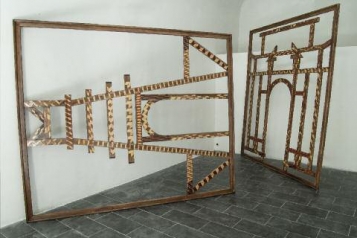
13/02/2015 - 25/04/2015
Opening: 12/02/2015, 7 p.m. 13/02 - 25/04/2015 Monographic show of Miquel Mont, an artist born in Barcelona who lives and works in Paris for over two decades. In his work, Mont seeks the most essential part of painting.
The exhibition brings together some of the latest production of this artist, with works made between 2007 and 2014 and is divided into four areas, which correspond to the four series presented: Cooperaciones, Lapsus, Mono-Tonos and Ideological Collages.
http://www.fundaciosunol.org/
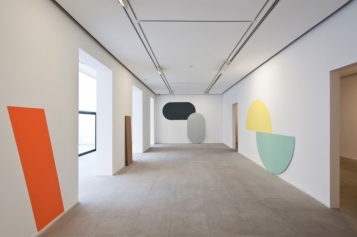
9ª Biennal d’Art Leandre Cristòfol
Comisariada por Gloria Picazo
Inauguración: 31 de enero a las 12h.
Artistas: Eva Fàbregas, Marco Godoy, Andrés Jaque, Mercedes Mangrané, Guillermo Mora, Juan Pérez Agirregoikoa, Teresa Solar, Julia Spínola, Àlex Trochut + Xavier Mañosa, Antònia del Río, Mauro Vallejo i Verónica Vicente.
Imagen --Dos casi cuatro, 2014 / 40 kg. de pintura acrílica sujeta por gomas elásticas / 56 x 25 x 46 cm.
Centre d’Art La Panera
Pl. de la Panera 2, 25002 - Lérida
www.lapanera.cat
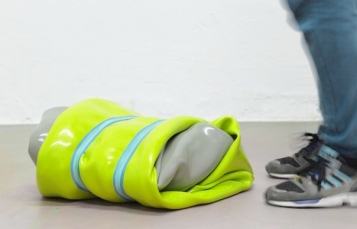
9ª Biennal d’Art Leandre Cristòfol
Comisariada por Gloria Picazo
Inauguración: 31 de enero a las 12h.
Artistas: Eva Fàbregas, Marco Godoy, Andrés Jaque, Mercedes Mangrané, Guillermo Mora, Juan Pérez Agirregoikoa, Teresa Solar, Julia Spínola, Àlex Trochut + Xavier Mañosa, Antònia del Río, Mauro Vallejo i Verónica Vicente.
Centre d’Art La Panera
Pl. de la Panera 2, 25002 - Lérida
www.lapanera.cat
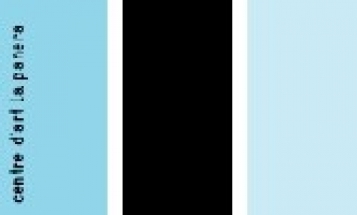
Cordial invitation to opening at the galerie annex14 in Zurich
Ana Roldan 'Take Position: Bodies and Plants' Opening: 29. January 2015, 18:00-20:00 Exhibition: 30. January - 7. March We. - Fr. 12:00-18:00 / Sa. 12:00-16:00 Galerie annex14, Hardstr. 245, 8005 Zurich http://www.annex14.com/annex/index.php?id=2
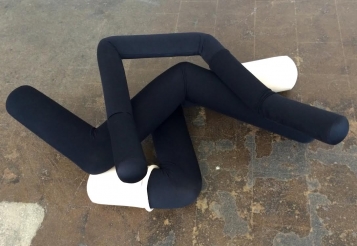
Artists: Anton Terziev, Alexander Kiossev, Alla Georgieva, Boryana Rossa, Vito Valentinov, Dimitar Dilkov, Dimitar Solakov, Zoran Georgiev, Ivan Moudov, Iskra Blagoeva, Kalina Dimitrova, Kalin Serapionov, Kamen Stoyanov, Kiril Prashkov, Krassimir Terziev, Luchezar Boyadjiev, Mariela Gemisheva, Nedko Solakov, Pravdoliub Ivanov, Rada Boukova, Samuil Stoyanov, Svetla Gradanska, Zara Alexandrova, Stefan Nikolaev
ica-sofia.org
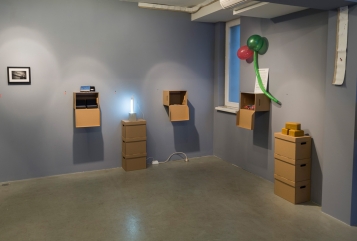
RICK-LIFE.MDF, lacquer 92 x38 x40 cm
You are resting on the foundations of the company’s business − life and risk − while resting on an art piece that allows you to look at great works by Tatsuo Miyajima and Olafur Eliasson.
http://www.artatswissre.com/flash/index.cfm
Two shiny lacquered chairs, one black, one white, face the glass fronted alcoves that look onto the central lift shaft of our Zurich headquarters. Commissioned especially for the space (to mark our 150th anniversary in 2013), the back frame of each chair incorporates a four letter word. One reads RISK, the other LIFE, reflecting our core business. Therefore, for the audience, ie our employees, Roldán chose a form that is double coded. As chairs, her work can be easily used: “You are resting on the foundations of the company’s business − life and risk − while resting on an art piece that allows you to look at great works by Tatsuo Miyajima and Olafur Eliasson. I wanted to invite people to sit in these specific balconies to contemplate the art pieces”. “Of course”, says Ana Roldán, “there are more complex ways to read the piece. While sitting on it, you can’t see it while you perceive other art pieces. Its visual disappearance is the condition of art contemplation.” It is a sculpture that pretends to be a chair, whose backrest is a sculpture of a word written in a typography Roldán developed.

Exposición UNDER(DE)CONSTRUCTION en el KREATIV-QUARTIER en Múnich
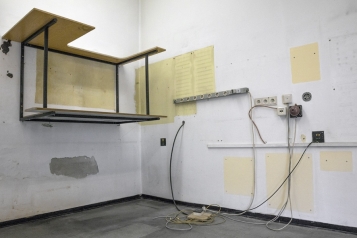
Foreign Office
by Michael McCannehttp://www.brooklynrail.org/
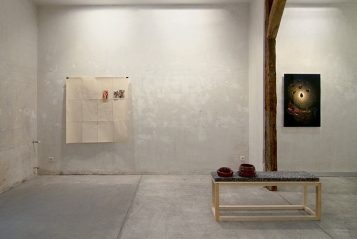
will be shown the video All the things that are not there, 2013, by Teresa Solar Abboud. Official selection of PhotoEspaña 2014.
http://www.mataderomadrid.org
www.phe.es
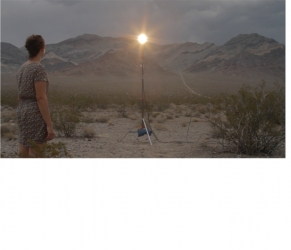
www.louiscomforttiffanyfoundation.org
2013 Biennial Competition Jury: Phong Bui, artist and publisher of The Brooklyn Rail Chrissie Iles, Curator, Whitney Museum of American Art Kathryn Kanjo, Chief Curator and Head of Curatorial, Museum of Contemporary Art San Diego Charles LeDray, artist John Perreault, curator, critic, artist, poet and founder of Artopia Cindy Sherman, artist Robert Storr, artist, critic, and Dean of the Yale University School of Art
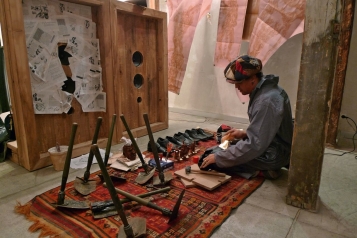
CASAL SOLLERIC ZONA BASE, PALMA DE MAIORCA
21.05.2014 - 20.07.2014
www.solleric.org
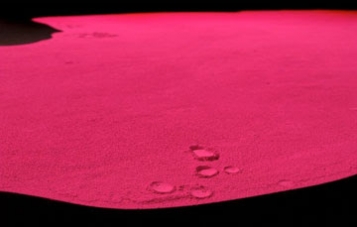
www.spainfreshspace.com/#!spanish-fresh-films/c1sxi
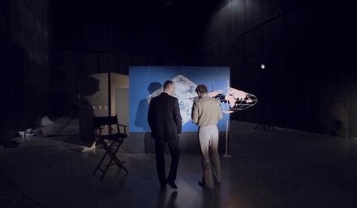
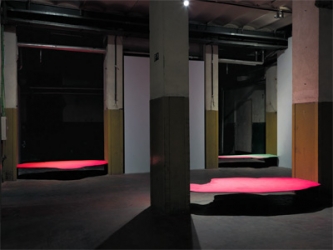
The jury was formed by Octavio García, artistic director of Audemars Piguet; Ángeles González Sinde, creator and former Minister of Culture; Soledad Lorenzo, gallery owner; Marga Paz, director of the Museo Reina Sofía Friends Association; Laura Revuelta, editor in chief of ABC Cultural; and Carlos Urroz, director of ARCOmadrid. They were keen to emphasise the great quality of the nearly 50 projects submitted by galleries and artists from around the world.
In the end, the prize, which consists of €15,000 to produce the work, was won by the project "cr_O_ma", by Madrid artist Guillermo Mora. The jury highlighted "the piece's investigation of colour, painting and sculpture, resulting in a new line of work in the promising career of this young artist". In the same way, it maintained the spirit of the brand's message: "There are exceptions to every rule".
Guillermo Mora
With a degree in Fine Arts from the UCM, he finished university with the First National Four-Year Degree Prize. In 2006 he received a scholarship to The School of the Art Institute of Chicago (USA) with the support of the BANCAJA Foundation, and he later obtained a postgraduate scholarship from the La Caixa Foundation. Noteworthy among his prizes and grants are the 2013 Caja Madrid Generation Prize, the Spain Academy in Rome Scholarship (2010-2011), a Visual Arts Production Grant from the Community of Madrid and an Honourable Mention in the 10th ABC Art Prize. His work has been shown at MACUF, the Elgiz Museum (Istanbul) and La Casa Encendida and at fairs such as ARCO, MACO and FRIEZE, and will shortly be exhibited at the ICA in London. He is represented by the galleries Formato Cómodo (Madrid) and Casa Triângulo (Sao Paulo).
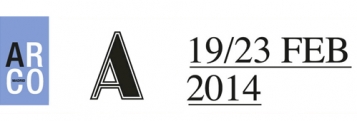
By Nuria Carrasco, Self-published
Another zine which echoes a magazine format, this time Hello! magazine. The subject is the struggle for the liberation of three generations of refugees in the Sahara desert. So we are invited to go in[side] various tents, meet families etc, all in the style of Hello!. This, together with some brilliant pastiche ads, makes one the best photographic statements of the year.
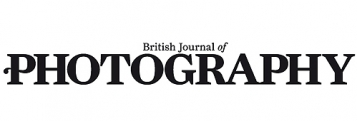
2014. ANTES DE IRSE. IDEAS SOBRE LA PINTURA
Curated by David Barro
Opening: 14th november, 20 h.
Artists: Miren Doiz, Jerónimo Elespe, Philipp Fröhlich, Santiago Giralda, Laura González Cabrera, Guillermo Mora & Alain Urrutia.vv
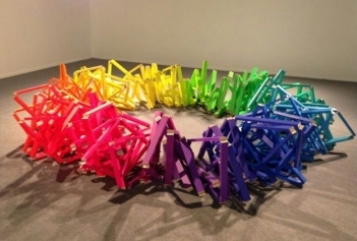
5th Moscow Biennale "Bolshe Sveta / More Light"
20 September - 20 October 2013 (opening Sept. 19)
Venue: Manege exhibition hall, Moscow
Curator: Catherine de Zegher
http://5th.moscowbiennale.ru
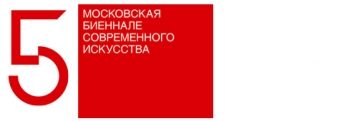
www.socratessculpturepark.org
A new selection from the Elgiz Collection will be displayed in the changing exhibition area of the museum. The title ‘13’ represents the 13 years of the Elgiz Museum as well as the year 2013. Newly acquired artworks will be shown including paintings, sculptures and video installations. Some of the artists whose works can be viewed at the exhibition are Julian Opie, Tony Cragg, Guillermo Mora, Aimée Zito Lema, Ray Harris, Veljko Zejak, Giuseppe Belvedere, Alexander Liberman.
/www.elgizmuseum.org
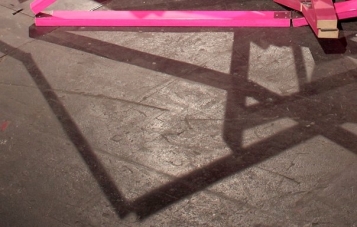
The work is based on recordings of a road trip through the USA visiting different spaces related to Edgerton. As the entrance to these places are forbidden in most of the cases, the work has been completed with fictional reconstructions of themselves.
Color, sound. 40 mint.
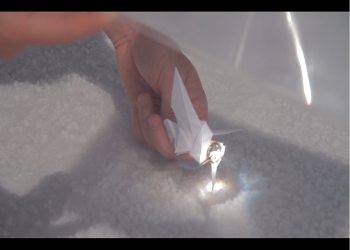
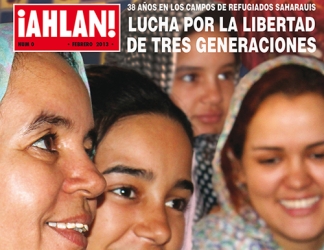
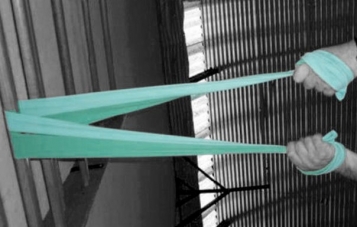
a project by Samuil Stoyanov
Samuil Stoyanov's site-specific space portraits series started with the Geocidite building in Belgrade where the 53rd October Salon took place in 2012. To study these modernist spaces of display and presentation, the artist first destabilizes the light, the fixed element of every space as such. Through these portraits every building he interacts with becomes a part of Stoyanov's artistic cosmos. In a gesture of hurling a light bulb above his head making the largest possible circle, Stoyanov, in his own words, makes reference to the movement of the space objects in the universe. Here the figure of the artist appears not only as a pseudo-scientist conducting inventive experiments but also as a black hole holding all the centrifugal movement in an orbit around him. The artist chose the Natural Museum of History in Sofia for the venue of his first-time such experiment in Bulgaria of a site-specific portrait as museum is a classic display place for geological history.
Where: National Museum of Natural History
When: 19 April – 12 May, 10am-6pm
1 Tsar Osvoboditel Blvd
1000 Sofia, Bulgaria
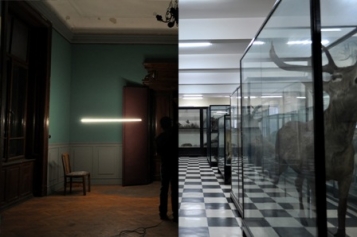
[prácticas pictóricas actuales... más allá de la Pintura o más acá]
Curated by Omar-Pascual Castillo
Opening 1st march 8:30 pm.
The first exhibition devoted to curatorial thesis proposal of the new artistic director of CAAM, take all the inside and outside museum space, receiving more than a dozen site-specific interventions in facades, patios, terraces and walls of the building, as well as relevant works on loan from more than ten private and institutional collections from Latin American pictorial context; territory where language and painting-as-art form has prevailed.
ON PAINTING is an ambitious exhibition project and reflection in which the painting is conceived, rather than as a genre of art, as a methodology, as a language.
The project will be accompanied by a theoretical event. Moreover, the CAAM will edit a publication with contributions of guest figures such as Barry Schwabsky, Kevin Power, Octavio Zaya and Omar-Pascual Castillo.
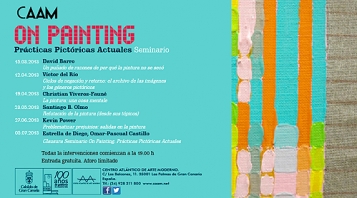
GENERACIÓN 2013
PROYECTOS DE ARTE CAJA MADRID
Opening 7th february 8:00 pm.
Winner artists:
Elena Alonso, La Tapadera
Irene de Andrés,Festival club
Manuel Eirís
Santiago Giralda, Rendering Landscapes
Juan López,castiga el pladur
Asunción Molinos
Guillermo Mora,Pentapack
Teresa Solar, Doble mordido
Julia Spinola,Frase(Objeto)
Martín Vitaliti, #17
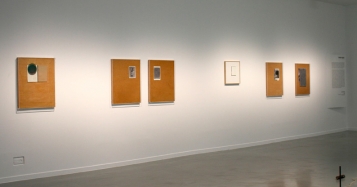
Madrid based half Mexican and half Japanese artist, presents
processed industrial made objects to create contradictions in their functions.
She has a constant will of transformation to point out the processes in the materials.
In some of the works she propose the use of ¨global objects¨, objects purchased in world
wide chain stores, to manipulate, arrange their parts in different ways and create new
opinions about everyday life circumstances. The instruction manuals of these objects are
also used to open new windows to see transformations on paper
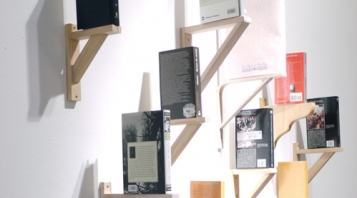
31/08/2012 First Act takes as its starting point the time to raise the curtain on the reopening ceremony. First Actopretende, through the social and political aspects of the event, questioning the role of the museum in relation alespectador, artwork, space and criticism. By employing rhetorical elements own lapintura history and theatrical, like the mirror and the curtain is intended to reflect the link between the expectations created before any act or statement and what is the moment of truth on these scenarios. Moreover, in several works criticizing and questioning the institution as a system that exerts its power over public opinion in defining specific structures of understanding and interpretation of art.
The exhibition involved the following artists: Mark Benson, Stefan Brüggemann, Andre Cadere, Mariana Castillo-Deball, Tacita Dean, Thomas Demand, Ceal Floyer, Lucio Fontana, Andrea Fraser, Douglas Gordon, Jonathan Hernandez, Adad Hannah, Fritzia Irizar, Adriana Lara, Natalia Martinez, Nils Nova, Goran Petercol, Wilfredo Prieto, Ana Roldán, and Pablo Vargas Lugo SUPERFLEX. Exhibition curated by Andrea Torreblanca, Associate Curator at the Museo Tamayo.
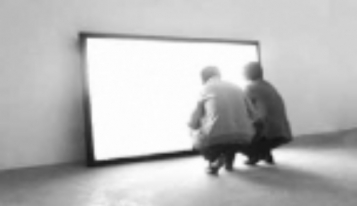
This exhibition has emerged from dialogues-both oral and written, developed in 2012 - which were built artistasy distance between the commissioner. Only one of his works, Robe (2011) of Marcellvs L., alproyecto previously existed and the engine is noisy Noestudio.Cada estaexposición in one of the dialogues was recorded for crearuna digital memory plus memory naturalde participants because humanoscambian memories constantly in subtle ways. "Recently, neurophysiological studies handemostrado that whenever realizasinapsis alters brain, which appears to confirm that lines nohay permanently fixed in the brain." Laesencia same memory is subjective and not unasimple mechanical reproduction. In fact, the mundoque see, hear, feel, are inventions denuestro brain. "Colors do not exist as such, are only human inventions" 2. Rosenfield conIsrael conversation about laexposición works and new studies cerebroy memory. The first point of contact between lasobras color is vibration that is emitted porellas. In the specific case of the work Robe (2011) there is a movement generation tireless denuevos colors. The video, filled with a fisicidadescultórica, presented in a decontextualized, a fishing net in the port of Reykjavik (Iceland), being collected from a boat after demeses at sea. Sean Edwards works yGuillermo Mora were nourished from a cross between the presence of pre-existing laexposición this engine, the dialogue between them and lascaracterísticas space. Guillermo has colgadoen the roof between you and me (2012) 2. Work done withthe help of the Ministry of Education, Culture yDeporte., A long line of racks enroscadoscreando an abstract body espacioinestable scanning the top, while the work of Sean dael rate exposure models making each objects arranged on the shelf that bisecaa Noestudio, make a nod to the oral dialogues with participants yescritos maintained.
The obrasjuegan with gravity and its relation to the notion of equilibrium suelodesestabilizando of obrasy / or viewer. The meeting suamplitud understood, is the raw material of the three artists and armed to the meeting elescenario ofreceformas not fixed, immutable or fosilizadas.Las works microcosm in themselves, together creanuna platform that serves as a source of nutrition alespectador; mechanisms tireless continúanbuscando, building and producing within one decade of us feel uncomfortable quees inability to fully understand larealidad. The future publication and this exposicióntienen the aim of bringing the viewer and their obras.1 losartistas. - Conversation with Israel Rosenfield about works dela exposure and further studies on the brain and memoria.2. - Constructed using the help the Ministry of Education, Culture and Sport.
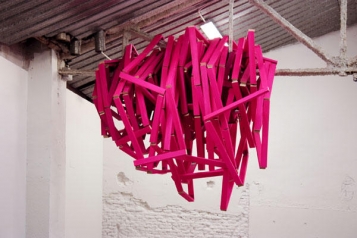
In this work different photographs taken by tourists at Los Gigantes beach, in Tenerife, are projected. The portaits of the tourists remain focused on the small screen, while the seascape, stays unfocused in the back.
The context is developed through a succession of actions occurring in a given space and time. The result is something unique and unrepeatable.
ICEBERG #1 is a project that has been developed through an exhibition accompanied by a publication, which seeks to propose a reflection on the current context of Madrid through the work of 17 artists, who share a space and time.
ICEBERG #1 has been conceived as a starting point from which to begin a critical dialogue.
It plays with the characteristics of an iceberg as something that is constantly moving whilst only having a small part of its total volume visible. This project aims to bring together fragments of artistic practices in Madrid, where diverse characteristics are generated within similar circumstances. An iceberg is also impossible to map, as is the overall art scene of the city.
This project is not intended to define the art scene through a selection of artists, but only to think about the foundations of our current context. The artists in this show have been brought together in the interest of focusing on diverse points of action that converge into the same panorama and to highlight the links and connections in the work of: Julio Adán, Elena Alonso, Irene de Andrés, Ignacio Bautista, Ignacio Chávarri, José Díaz, Carlos Fernández-Pello, Theo Firmo, Cristina Garrido, Karlos Gil, Cristina Llanos, Almudena Lobera, Nacho Martín Silva, Alfredo Rodríguez, Teresa Solar, Luis Vassallo and Françoise Vanneraud that produce the aforementioned context.
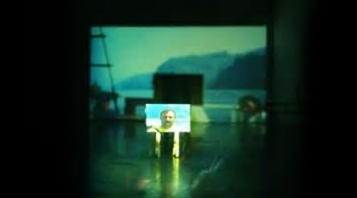
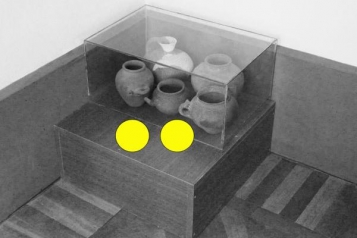
The exhibition is centered around the practices of artists who have sought the failure of an active form. The exhibition presents a multifaceted view by artists of different generations and backgrounds with a vital relationship with Spain.
Works by: Wilfredo Prieto, Guillermo Mora, David Bestué, Fermin Jimenez Landa, Ignacio Uriarte, Jaime Pitarch, Chus Cortina, Carla Farren, Raul Gomez Valverde, July Falagán, Isidoro Valcárcel Medina.
The jury this year was composed of D. Alessio Antoniolli, Director Triangle Network & Gasworks, Ms. Katya García-Antón, curator of the Spain Pavilion at the Venice Biennale and Ms. Carolina Grau, independent curator.
The Burning House
Round Valencia 2 - 28012 Madrid
www.lacasaencendida.com
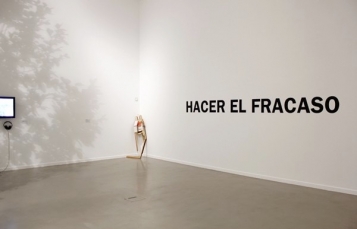
Opening Tuesday June 5 at 20 h, 2012.
Kindel Joaquin Palace (Madrid 1905) considered photography as the result of the artist's eye that fired his machine when he saw something he liked, he was more interested in the light of the image photographed scenes themselves.
"It's a matter of looking and shoot when you like something so special, no more mystery. Light is very important, as in painting. The technique is the least "
Kindel offers in secret that which does not display and offers us a secret hidden beauty and wondrous than anyone knows and stays in adversity.
Self-taught photographer, rejection join any group, but was unrelated as magazine photographer in the fifties architecture with cutting-edge architects. After the Civil War began his professional photography work in Devastated Regions, then went to work for the Department of Tourism.
In this exhibition included in the festival PHOTOESPAÑA Off 2012 "popular debugging" present a randomly selected photographs of large file that is the legacy of Kindel. His work was defined as Alejandro de la Sota: ... "The popular debugging exornación stripped of all vulgar, is a mine of discoveries and surprises."
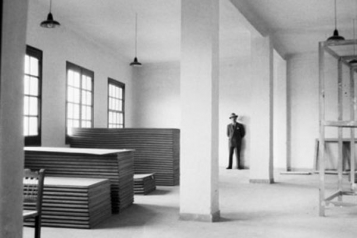
Matadero Madrid
Nave 16
Paseo de la Chopera 14 - 28045 Madrid
www.mataderomadrid.org
El Ranchito is a research-formatted cultural project, sponsored by Matadero Madrid and supported by other artistic professionals in the city. It is comprised by a section dedicated to reflection, a residency and scholarship program, a section for public presentation and a satellite activity program.
From November to April, El Ranchito will organize a public presentation- an expository phase that will allow the public to take a look at the research done up until now. The presentation will be housed in Nave 16 at Matadero Madrid, a 4,800 sq. meter space where the guest artists and collectives will display their work: the process used and the final results. This is a great collection and an even greater chance to get to know El Ranchito.
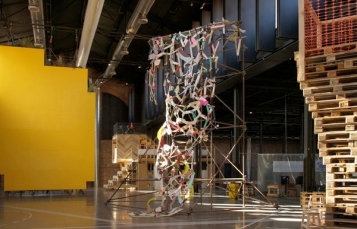
SISTEMA METRICO CAMPO DE FUTBOL
HISAE IKENAGA
From 18 of march
to 22 of may


